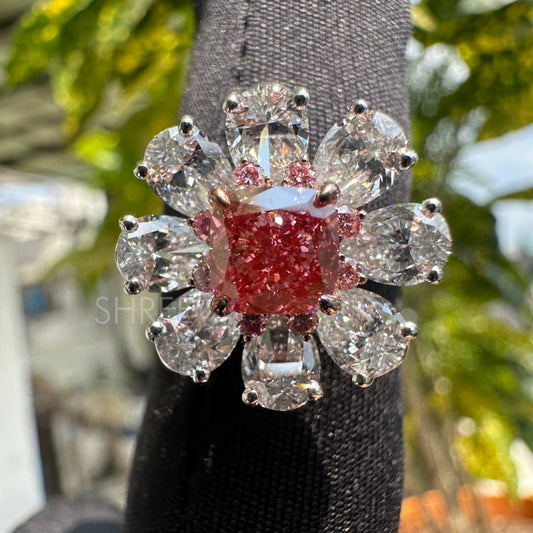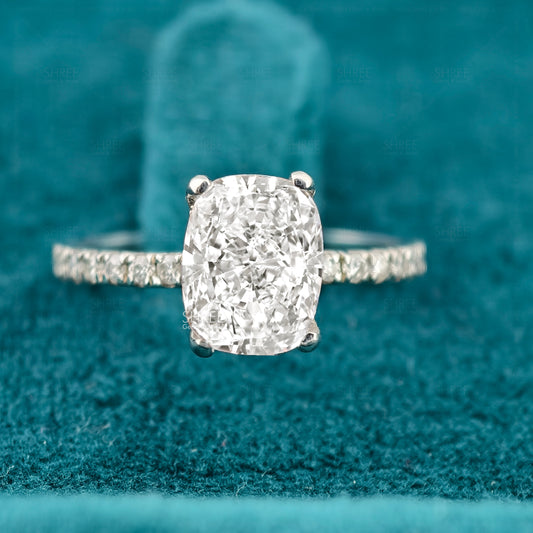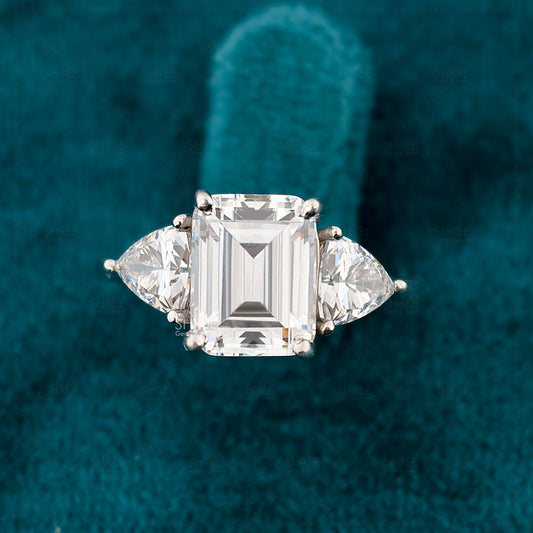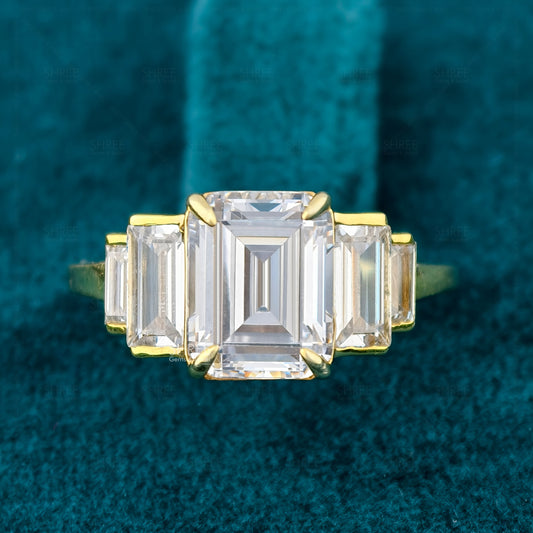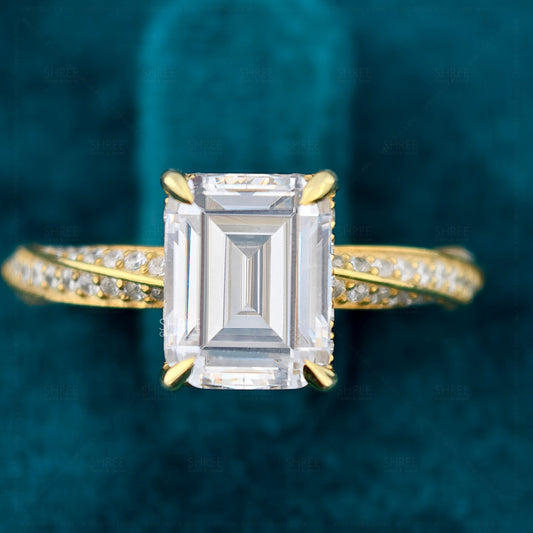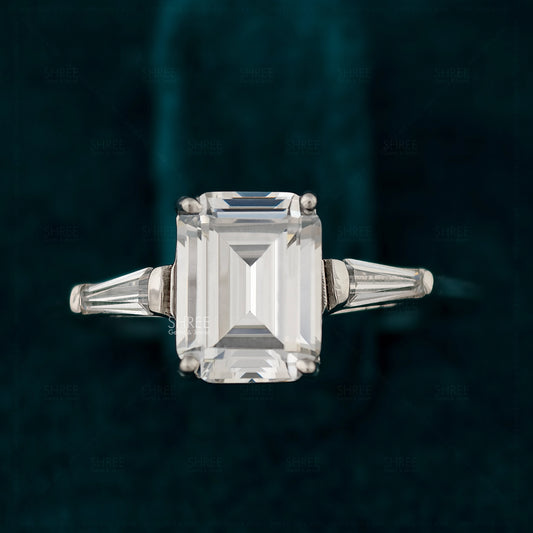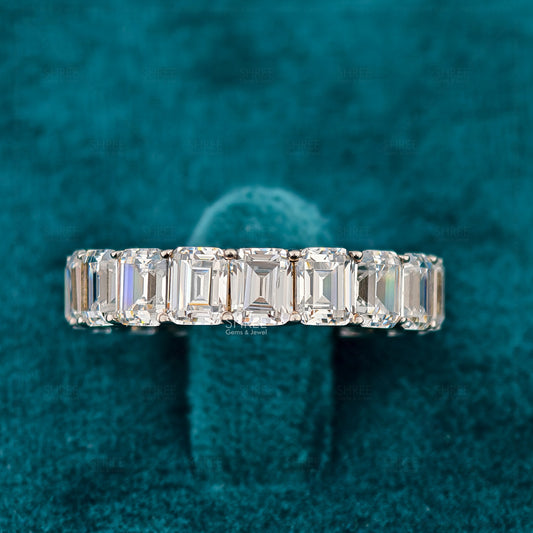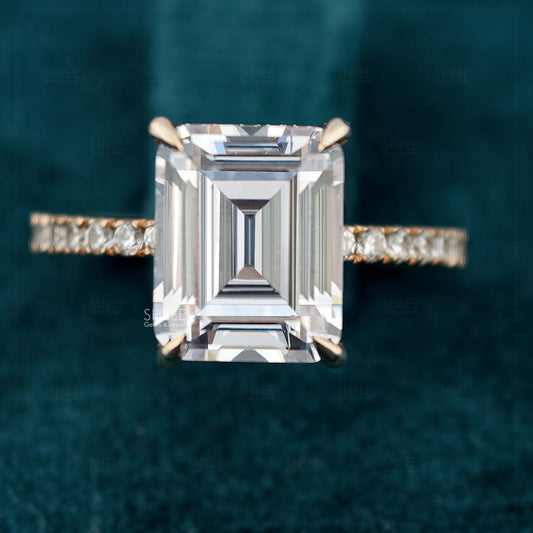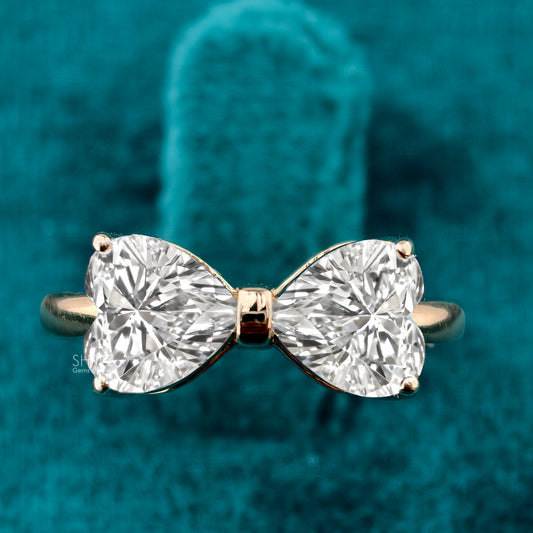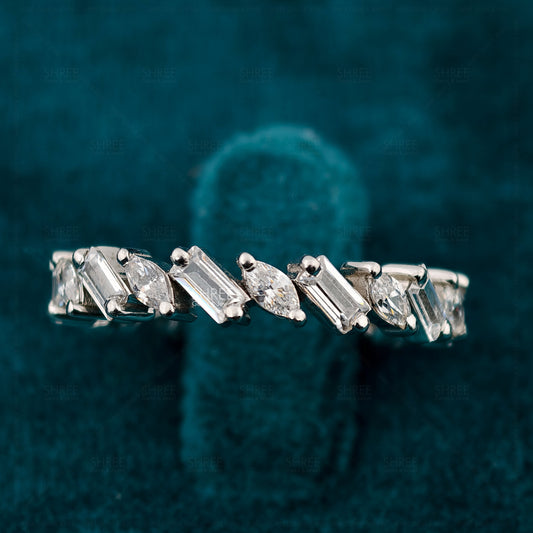Introduction
Choosing a gemstone for an engagement ring or any special piece of jewelry is a big decision. Two popular options today are lab-grown diamonds and moissanite. At first thought, they can look the same. Both are clear, brilliant stones created in the lab. But they are different in origin, look, price, and quality. This guide clarifies those differences so you may decide which is the right choice for your ring, whether you’re considering lab grown diamond rings, moissanite diamond engagement rings, or even a lab grown diamond necklace or lab grown diamond bracelet.
What Are Lab-Grown Diamonds?

Lab-grown diamonds are real diamonds created under controlled conditions that mimic the natural process deep within the Earth. Scientists use either high pressure and high warmth (HPHT) or CVD (chemical vapor deposition) to grow them. The result is a diamond with the same chemical composition and physical properties as a mined diamond: pure carbon arranged in a crystal lattice.
Because they’re grown in a lab, these diamonds avoid the mining process, which can have environmental and ethical issues. Lab-grown diamonds are graded by the same criteria as mined diamonds—cut, color, clarity, and carat weight—and they can be certified by major gemological labs such as IGI or GIA. When you’re shopping for a GIA certified lab grown diamond engagement ring, loose lab grown diamonds, a lab grown diamond band, or even lab grown diamond earrings, the same grading standards apply.
What Is Moissanite?

Moissanite is a different gemstone totally. It was first found in a meteor crater in the late 1800s by scientist Henri Moissan. Natural moissanite is extremely rare, so all moissanite used in jewelry today is created in labs. Chemically, moissanite is silicon carbide, not carbon like a diamond.
Moissanite became popular because it looks similar to a lab diamond but costs far less. It also has its own visual aspects, including a high level of brilliance and a slight rainbow-colored light return that some people love and others find too flashy. Many couples now choose diamond moissanite rings or compare moissanite vs man made diamond as part of their decision process.
Difference Within Lab-Grown Diamond V/s Moissanite

Lab-Grown diamonds are real diamonds made in a lab but have the same look and strength as mined diamonds. Moissanite is a different stone made from another material. It shines brightly too but with more rainbow-like colors and is a bit softer than a diamond. Lab-grown diamonds look and feel almost the same as natural diamonds, while moissanite is a cheaper but different choice.
Visual Look: Side by Side
Color
Lab-grown diamonds can be grown in many colors—white, yellow, pink, blue, and more—just like mined diamonds. They’re graded on the standard diamond color scale from D (colorless) to Z (light yellow or brown).
Moissanite normally looks colorless but can show faint yellow, green, or gray tints based on the quality. Newer “colorless” moissanite is closer to the diamond scale’s near-colorless grades, but under certain lighting it may still look different.
Brilliance and Fire
The brilliance refers to how much white light a stone reflects. Fire refers to how much colored light (rainbow effect) it showcases. Moissanite has a higher refractive value than diamond, which means it bends light more. As a result, it can display stronger rainbow flashes than a diamond. Some people like this colorful effect; others prefer the more classic look of a diamond’s white light return.
Hardness and Durability
Diamonds—whether mined or lab-grown—are the hardest natural material, scoring 10 on the Mohs hardness scale. Moissanite is also very hard at 9.25, which makes it suitable for daily wear. However, a diamond is still more resistant to scratches over time. If maximum durability is your top priority, diamond wins by a small margin.
Price Differences
One of the biggest reasons people consider moissanite is cost. On average, moissanite is much less expensive than lab-grown diamonds. The price difference can be dramatic:
A 1-carat colorless moissanite may cost a few hundred dollars.
A 1-carat lab-grown diamond of similar appearance may cost several thousand dollars (though still less than a mined diamond).
This gap means you could choose a larger moissanite for the same budget or spend less overall. Lab-grown diamonds, while cheaper than mined diamonds, still carry a premium because they are chemically and optically true diamonds. Whether you’re comparing lab grown diamond engagement rings to moissanite diamond engagement rings, price is often the deciding factor.
Certification and Grading
Lab-grown diamonds are certified and graded just like mined diamonds. You’ll receive a report detailing cut, color, clarity, and carat weight. This makes it easy to compare stones and understand exactly what you’re buying.
Moissanite does not follow the same grading system. Some sellers label moissanite by terms such as “premium” or “super premium,” but there’s no universal standard like the diamond 4Cs. It’s important to buy moissanite from a reputable retailer who provides clear information on size and color quality.
Ethical and Environmental Factors
Many buyers choose lab-grown diamonds because they avoid traditional diamond mining. The environmental impact is lower, and the supply chain is more transparent. Moissanite is also lab-created, so it carries similar advantages in terms of sourcing. In other words, both options are conflict-free and more sustainable compared to mined stones.
Resale and Long-Term Value
Resale value is another point to consider. Mined diamonds generally hold more value over time. Lab-grown diamonds currently have a lower resale market, as the supply keeps growing and prices continue to drop. Moissanite also has little to no resale value because it’s not as rare or as in demand as diamond.
If your main goal is investment or long-term value, both lab-grown diamonds nor moissanite can match a high-quality natural diamond. But if your goal is an attractive, affordable stone for daily wear, resale may not matter as much.
How to Choose Between Them
Here’s a simple way to think about your choice:
Choose a lab-grown diamond if you want a real diamond with all its classic qualities—true carbon crystal structure, high hardness, known grading—and are okay with paying more than you would for moissanite.
Choose moissanite if your top concerns are budget and size, and you like the lively rainbow light it gives off. It’s also a great choice for couples who want a ring immediately without spending thousands.
This thinking works whether you’re shopping for a lab grown diamond engagement ring, lab grown diamond band, or a diamond moissanite ring.
Care and Maintenance

Both lab-grown diamonds and moissanite are easy to care for. They can be cleaned at home with mild soap and water or a jewelry cleaner. Because diamonds are harder, they’re possibly more resistant to small harm. Moissanite can also last for decades with proper care, making it a practical everyday option.
Final Thoughts
Lab-grown diamonds and moissanite offer two modern ways to enjoy beautiful, clear stones without the high price tag or ethical concerns of mined diamonds. The right choice depends on what matters most to you: quality and classic look, or affordability and larger size.
Faqs:
The Best Place to Buy Lab-Grown Diamonds Rings?
To buy the best lab-grown diamonds, you can use the Shree Gems and Jewel Platform. It also offers IGI certification and free worldwide shipping.
Are lab-grown diamond rings worth buying?
If you're looking for something ethical, affordable, and just as beautiful, lab-Grown diamonds rings are a smart option.
How To Measure Lab-Grown Diamond Weight?
Lab-grown diamond weight is measured in carats using precision scales, where 1 carat is equal to 200 milligrams or 0.2 grams.
Lab-Grown diamond Jewelry Cleaning Process At Home.
Fill a bowl with warm water and a few drops of mild dish soap, soak the jewelry for 15-20minutes, then gently scrub the diamond and setting with a soft-bristled toothbrush to remove buildup.
Which Color Are Come In Moissanite Diamonds?
Naturally near colorless stones and a variety of lab-created colors like yellow, green, blue, purple, pink, gray, and black.
What is the best Moissanite Grading, and how to check?
D-F colorless grade, high clarity (like VVS or better), and an Excellent cut grade maximize and brilliance. you check grading- use of GRA website.
Where do moissanite diamonds come from?
This is Lab-created, but they are named after the naturally occurring mineral silicon carbide discovered in meteorites.
What is the hardness of Moissanite Diamond and how to check it?
Moissanite has a hardness of approximately 9.25 to 9.5 on the Mohs scale.




